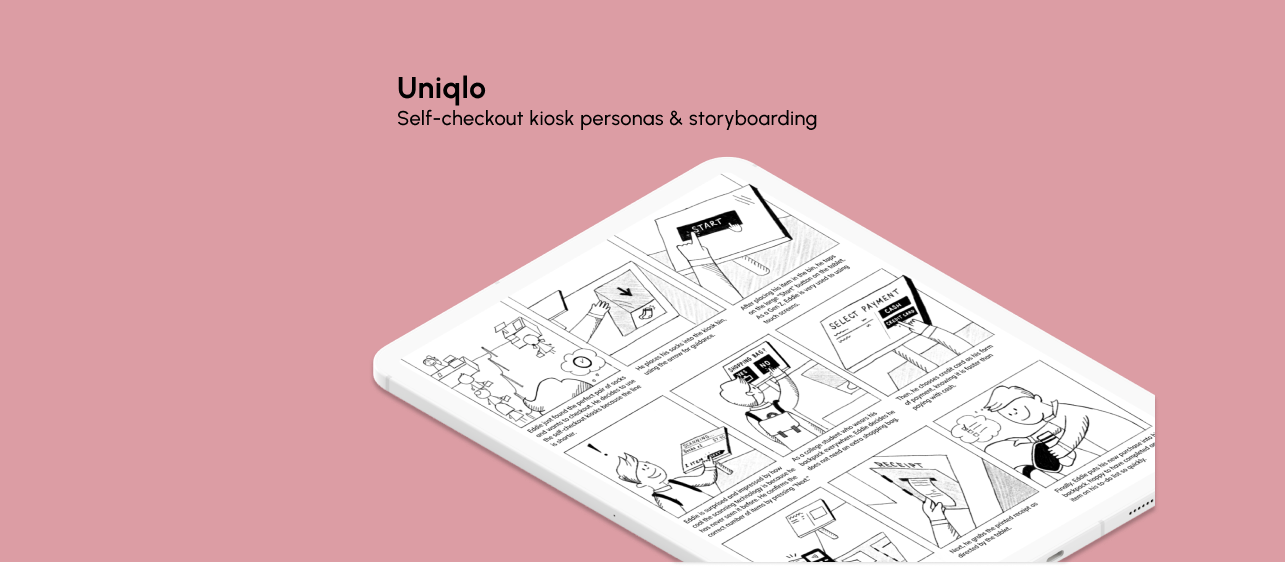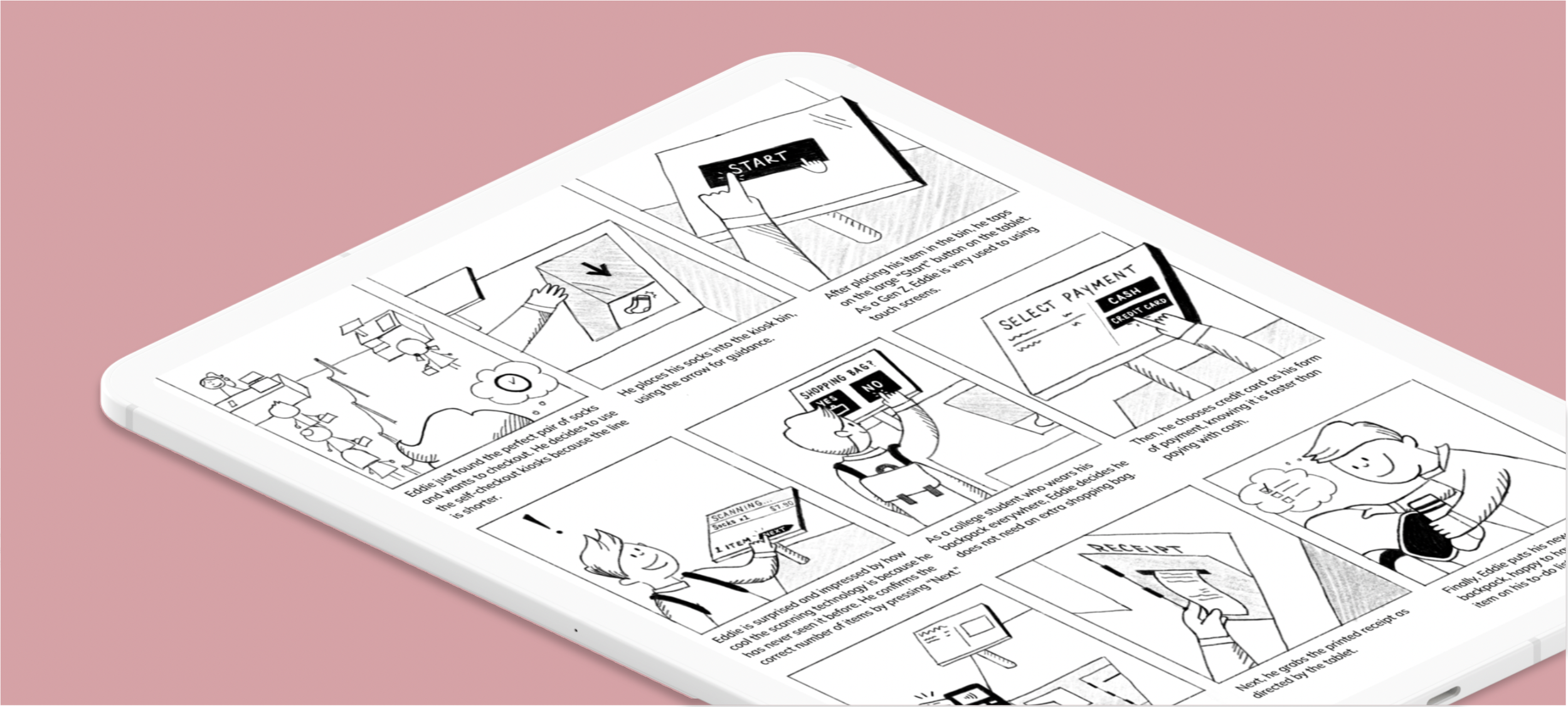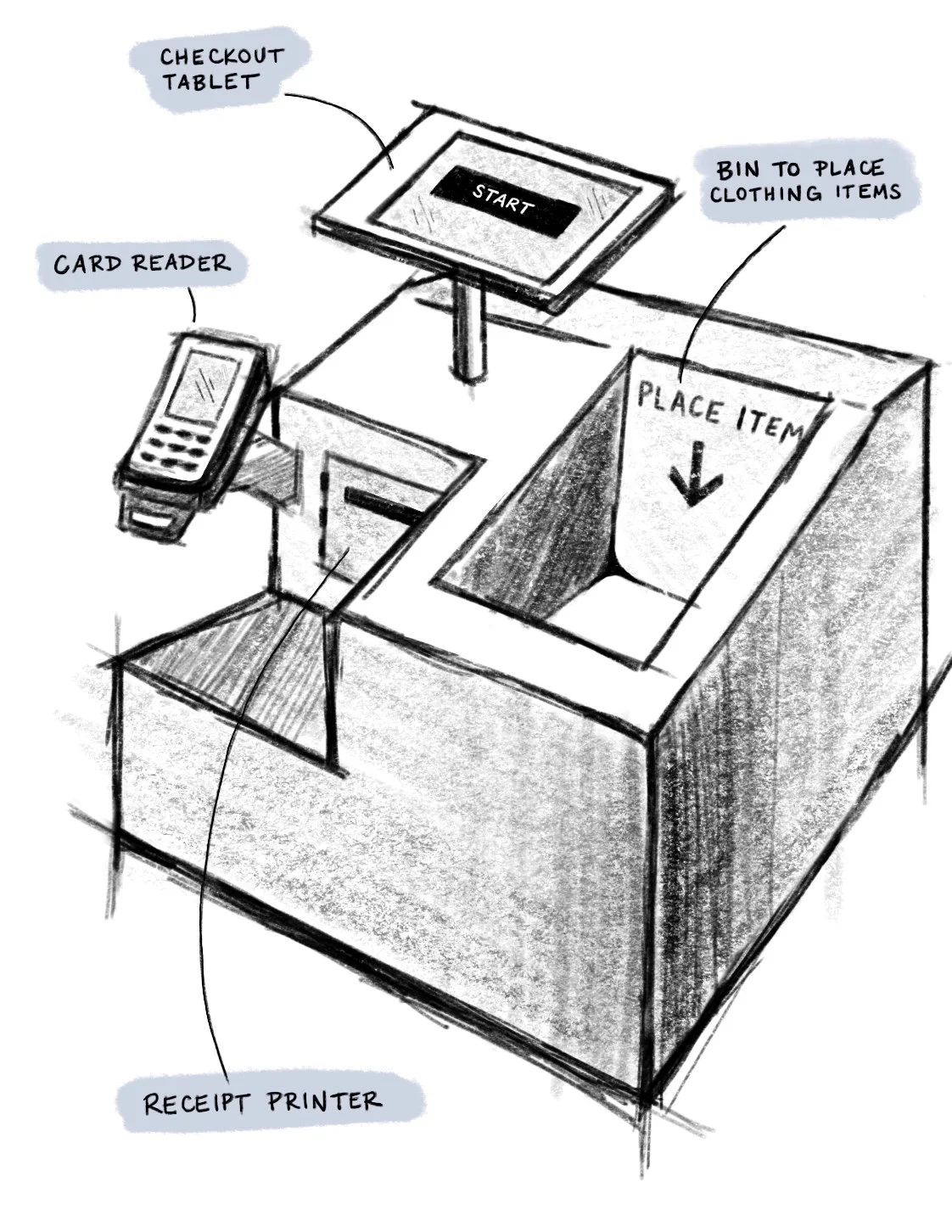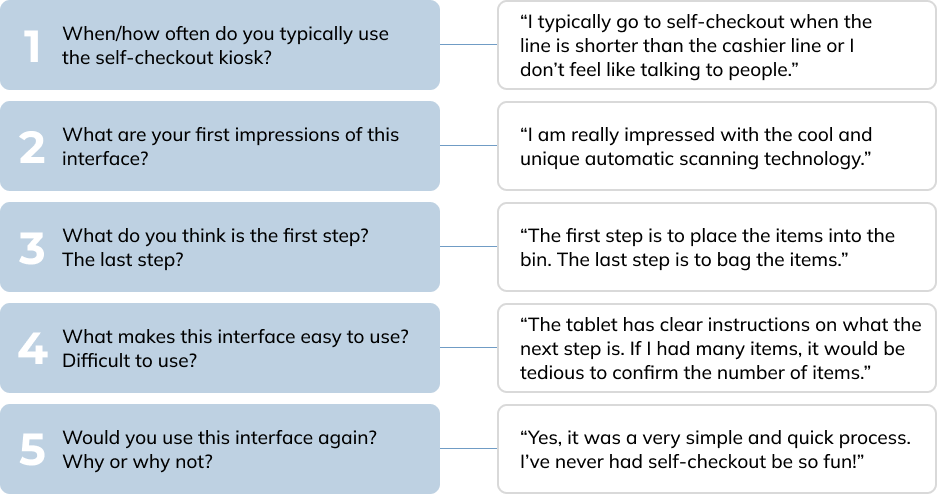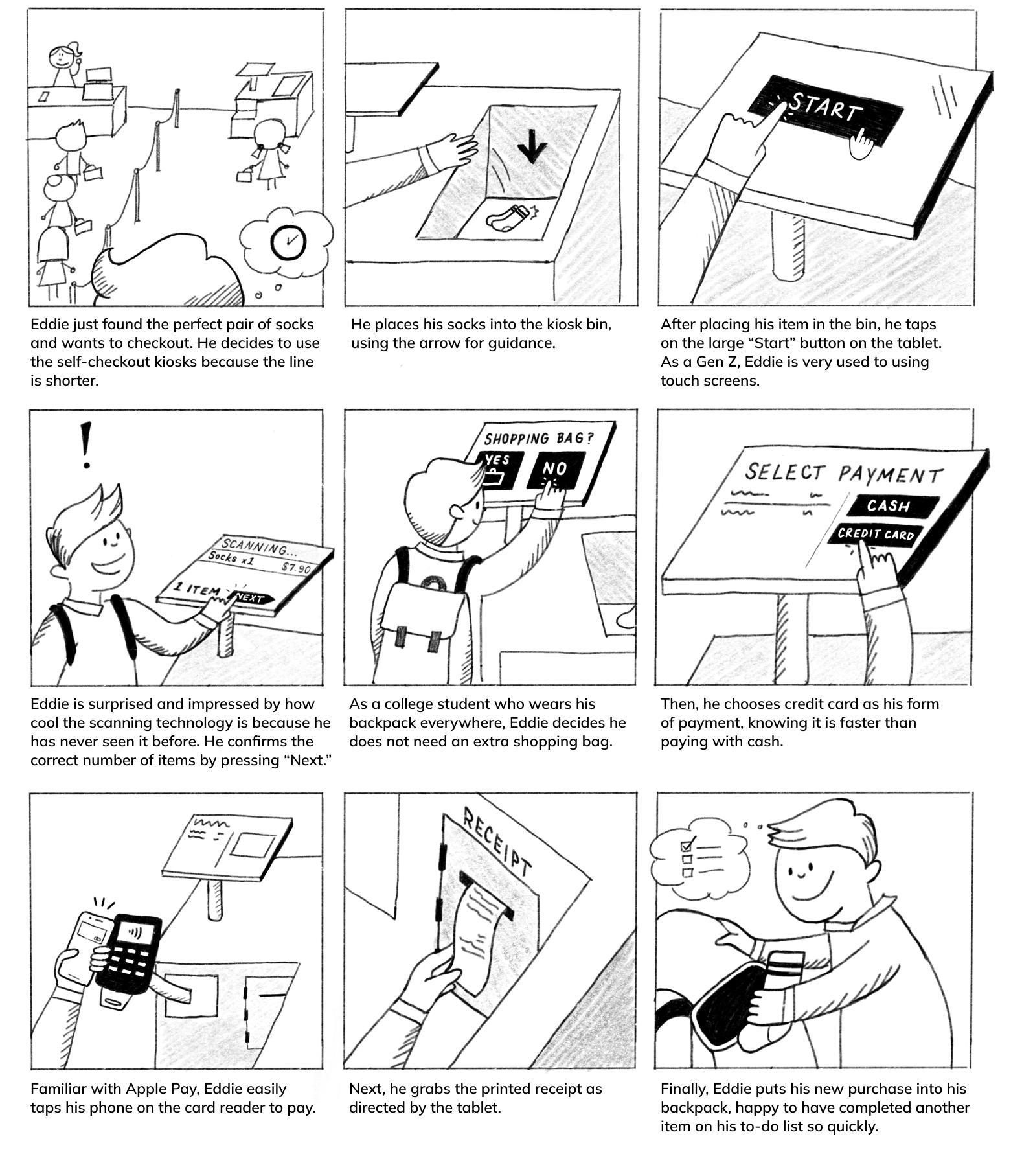Uniqlo Self-Checkout Kiosk
overview
One of the first assignments for the UX/UI course at Brown was to develop deeper understanding and empathy for users. We did this through in-field research and observation, followed by storyboarding to illustrate the end-to-end customer journey. The prompt: Step into a user's shoes. Individually, you will observe real users interacting with an interface, interview these individuals about their experiences, create personas based on these users, and illustrate a storyboard for one of your personas.
Timeline
September 2022
SKILLS
User Research, Personas, Storyboarding
00. Goal
What does the user journey of the Uniqlo self-checkout kiosk look like?
01. Interface
For this assignment, I chose to study the self-checkout kiosk at Uniqlo, a Japanese casual wear clothing store. The kiosk is composed of a bin to place clothing items, a checkout tablet, a card reader, and a receipt printer. Customers 1) place all clothing items into the bin at once (which automatically scans them using RFID technology), 2) press "Start" on the tablet, 3) confirm the number of items is correct, 4) select payment and obtain receipt, and 5) bag items. This interface solves the issue of users having to scan each individual item, creating a streamlined and enjoyable experience.
02. Research
First, I objectively observed how users interacted with the kiosk. I was also able to record a friend using the interface to capture each screen on the tablet. I recorded the following observations:
Users often had intrigued, impressed, or excited expressions to the automatic scanning.
Users spent around 3-5 minutes on average to complete the entire checkout process.
Younger users navigated through the tablet & checkout process more quickly.
Some users placed items in the scanning bin one at a time, some put all items in at once.
Very few customers required staff to help figure out the kiosk.
I then conducted interviews with 3 different users to gain a deeper understanding of their motives, experiences, and expectations when using the kiosk. From the 5 questions asked, I aggregated the most common responses.
03. Personas
Based on observations and user interviews, I created two personas that represent archetypes of people who typically use this kiosk. These personas are represented through a "Thinks, Feels, Says, Does" empathy map.
04. Storyboard
Using the "Efficient Eddie" persona, I created a storyboard mapping out his user journey from start to end.
